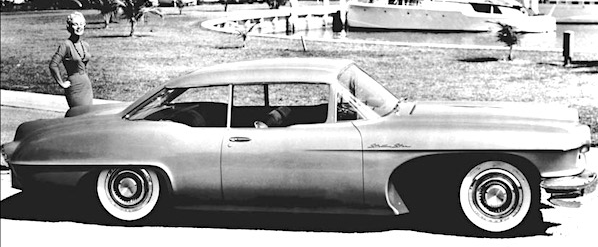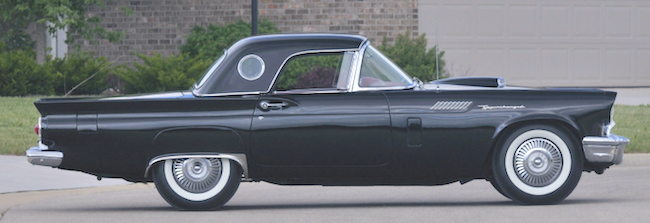The 1930s decade saw a major transition in automobile styling. At its start, sedans were rather boxy, with separate fenders, spare tires, headlamps and such. By 1940, American designs were becoming largely integrated, most details aside from fenders merged into the main body. And those main bodies were of all-steel construction rather than being metal-clad panels attached to wooden frames.
I usually place the endpoint of this evolution in terms of the 1949 Ford, an attractive design where all elements were essentially integrated into the car body.
As for the 1940 model year, the redesigned cars from General Motors and Chrysler Corporation were smooth, not awkward like earlier designs produced during the evolution. Today's post presents some sedan designs along with a few examples from 1939, the previous model year, to illustrate this step in the styling transition.
I previously posted on this subject
here and
here regarding 1940 General Motors designs.
Unless noted, images below are of cars listed for sale on the Internet.
Gallery
1939 Dodge 2-door sedan - unknown photo source
Chrysler's 1939 line was given major facelifts, mostly from the windshield forward, an expensive means of transitioning to the redesigned 1940 cars.
1940 Dodge
This basic body was used from 1940 to partway into the 1949 model year, aside from wartime years when production was curtailed.
1940 DeSoto - unknown source
Brand distinction was mostly from the cowling forwards. Here is the DeSoto version.
1939 Chrysler Royal - factory image
The heavily facelifted '39 Chrysler Royal, the entry-level Chrysler brand model.
1940 Chrysler Royal - factory image
The 1939 Royal looks awkward compared to this tidier, smoother design. By the 1940 model year, Detroit stylists and body engineers had finally learned how to use 1930s glass and metal-forming technology advances to create pleasing designs.
1939 Pontiac De Luxe Eight
This was a new design for that model year, but still somewhat awkward. The front fenders are not well blended into the main body, and the headlight assemblies are not integrated at all.
1940 Pontiac Torpedo
General Motors' C-body for 1940 marks the culmination of 1930s lessons-learned.
1940 Oldsmobile
A nicely integrated design aside from the fussy grille and not-quite-integrated headlight assemblies (that transition would be completed for 1941).
1940 Buick Super
Now for a few views of Buick's Super, its entry-level C-body. Again, the grille and headlamps are still needing refinement.
Otherwise, window profiles relate well to the roofline and beltline. Fenders are distinct, while also merging into the main body.
The after part of the passenger compartment greenhouse and trunk area relate to each other well: no tacked-on look as in previous designs.

%20right%20front%2023.jpg)





































